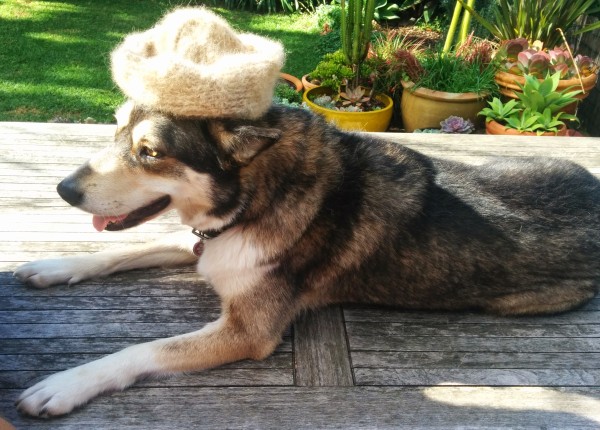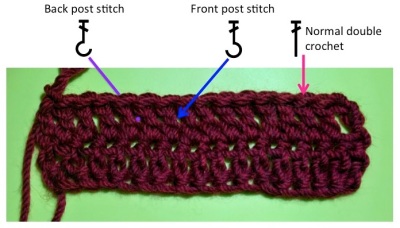A couple of weeks ago I started spinning yarn out of the fur of my dog, Kody. This was a specific request from my brother, who wanted me to make him a hat out of the yarn. Today, I present, the hat!

I’m really really happy with how this yarn worked out. I wasn’t sure about how it would look in a finished product, particularly with the cables. I needn’t have feared, it came together beautifully. This yarn ended up being around worsted-weight (10-ply), probably slightly lighter. But heavy enough to work with the a worsted-weight pattern, using a 6 mm hook to make the hat large sized. The colour is the natural gold of Kody’s undercoat, which is also provides the fuzz :) I added a bit of Merino wool to the mix, at a ratio of around 3/4 dog to 1/4 wool, to provide some elasticity and compensate for a short stable length. The finished hat is super soft and warm.
This hat is crocheted from a pattern by Aaron Mathew Asmussen, like the ‘man hat‘ I made previously. This time I used the Nested Diamond pattern, which was slightly more challenging then the Open Weave pattern I used before… challenging in a fun way :) I really enjoy working these pattern, and I feel like they’re giving me a good education in cables. There are certain elements, that are used to form cables, for example particular stitches that are use to form the bottom of this diamonds when one cable appears to cross over the other. I can see how, in the future, I might be able to put these elements together to create my own cable designs.

After finishing the increase rounds of the hat. You can see the ball of yarn I’ll be working next, and the skein to go after that. I think the hat looks a bit like a fuzzy starfish right now.

The diamond details starting to emerge.

Helpful Tim is helpful.

Kill Tim, kill!!!! Destroy the abomination of dog yarn!

Posing with the pretty hat, before I have to give it to the brother, who’ll probably take it into the bush to get to some rock climb or another. At least I know that he’s head will be warm!
For follow up photos, including the star of the show, the dogs, see here.






















